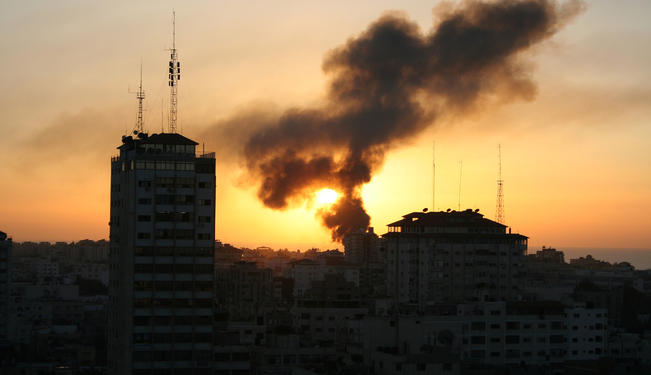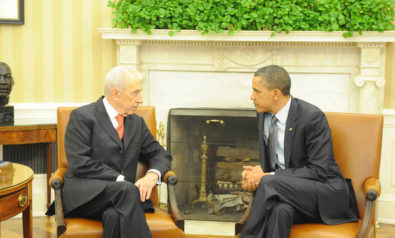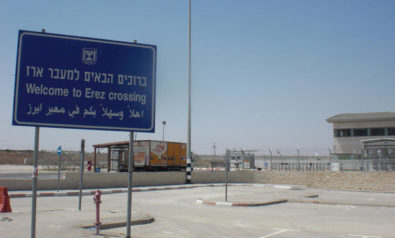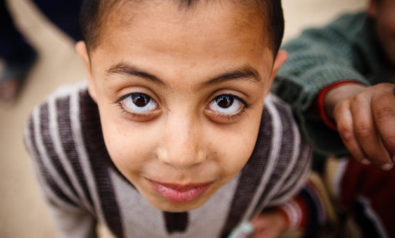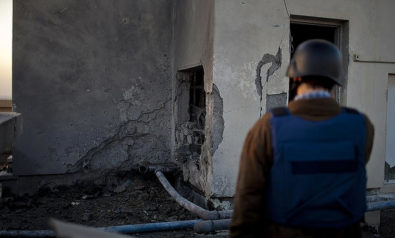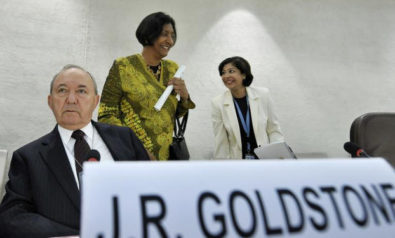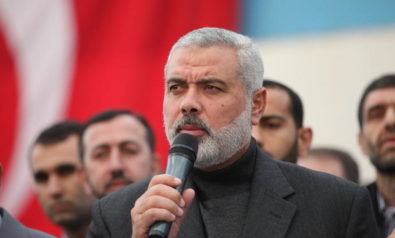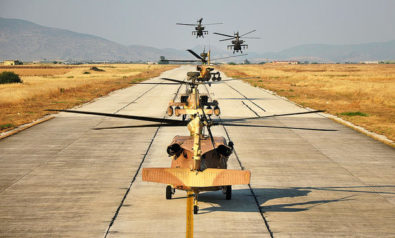
The densely-populated and largely-impoverished Gaza Strip has clashed with neighboring Israel since Israeli soldiers and settlers withdrew from the territory in 2005. This month has seen the fiercest fighting between Israel and Hamas in nearly four years.
Background The Palestinian territory bordering the Mediterranean Sea, known as the Gaza Strip, has witnessed a history characterized by high population density and growth, international isolation, economic instability, and violent clashes with neighboring Israel. This strip of land—only 25 miles long and 3.5 to 7.5 miles wide—has one of the highest population densities in the world. Refugees and internally displaced persons represent more than 80% of Gaza’s population. Gaza’s current boundaries were defined at the end of the 1948 Arab-Israeli War. The territory was placed under Egyptian control, which lasted until Israel captured Gaza in the Six-Day War in 1967. The Oslo Accords, signed in 1993, transferred administrative control to a newly-established Palestinian Authority and in 2005, Israel unilaterally disengaged from Gaza. Israel still maintains control of Gaza’s airspace, territorial waters, and most border crossings, and it prevents the movement of goods by air or sea, allowing only land transport. In 2007, Israel and Egypt began a blockade on Gaza, after the territory came under the control of Hamas, a Palestinian political party that is considered a terrorist organization by the US, Israel, and the European Union. Hamas won a majority of seats in the 2006 Palestinian legislative elections and formed a unity government with its more secular rival, Fatah. However, the government quickly fell apart, and Hamas seized power in Gaza after a series of bloody clashes with Fatah forces. Israel and Egypt eased the blockade in 2010 in response to intense international criticism of an Israeli attack on a flotilla attempting to defy the blockade. Israel now allows the entry of most consumer goods, except construction materials and other “dual use” goods, and has permitted a small amount of exports. In 2011, Egypt opened its border crossing with Gaza to persons and goods. As a result, Gaza’s economy has improved but remains weak. The private sector, which is dependent on exports, has nearly collapsed under the blockade, and the unemployment rate remains high. In addition to the ongoing blockade, violent clashes with Israel have damaged Gaza’s economy and infrastructure, and killed or displaced large numbers of residents. Gaza witnessed its most deadly fighting in 2008-2009 when Israel launched Operation Cast Lead in response to an uptick in Palestinian militant rocket attacks on southern Israel. In three weeks of air and ground assaults on Gaza, the operation killed as many as 1,400 Palestinians (mainly civilians), left tens of thousands homeless, and destroyed much of Gaza’s civil infrastructure. Thirteen Israelis were also killed in the fighting. The conflict ended with each side unilaterally declaring a ceasefire. Despite the ceasefire, cross-border skirmishes have continued since 2009. Why is the Gaza Conflict relevant? Fighting broke out this month between Israel and Hamas in the first major conflict since Operation Cast Lead. Following this month's earlier exchange of violence, Israel’s targeted assassination of Hamas' Military Commander Ahmed Jabari on November 14 marked the beginning of Operation Pillar of Defense. According to Israel, the operation is intended to protect Israeli citizens from rocket and mortar attacks originating in Gaza and disrupt Palestinian militants’ capabilities. Within the first six days, Israel struck 1,350 targets in Gaza, and Palestinian militants launched several hundred rockets. During this period, three Israelis and over 100 Palestinians were killed, as well as over 800 Palestinians injured. Indirect talks on a ceasefire began on November 18 in Cairo, with Israel demanding an end to rocket and small arms fire from Gaza, and Hamas calling for a cessation of the blockade. However, the two sides have yet to reach an agreement, and Israeli army reservists have amassed at the Gaza border in preparation for a potential ground invasion. Many fear that the fighting could further endanger the already-stalled peace process if the ceasefire talks fail and the conflict escalates to a bloody ground war on par with Operation Cast Lead.
For more than 10 years, Fair Observer has been free, fair and independent. No billionaire owns us, no advertisers control us. We are a reader-supported nonprofit. Unlike many other publications, we keep our content free for readers regardless of where they live or whether they can afford to pay. We have no paywalls and no ads.
In the post-truth era of fake news, echo chambers and filter bubbles, we publish a plurality of perspectives from around the world. Anyone can publish with us, but everyone goes through a rigorous editorial process. So, you get fact-checked, well-reasoned content instead of noise.
We publish 2,500+ voices from 90+ countries. We also conduct education and training programs on subjects ranging from digital media and journalism to writing and critical thinking. This doesn’t come cheap. Servers, editors, trainers and web developers cost money.
Please consider supporting us on a regular basis as a recurring donor or a sustaining member.
Support Fair Observer
We rely on your support for our independence, diversity and quality.
Will you support FO’s journalism?
We rely on your support for our independence, diversity and quality.

